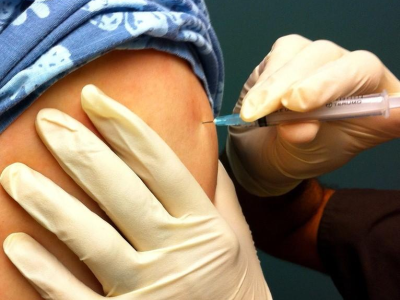Low-pathogenic H7N3 virus found in California turkey flock
A low-pathogenic avian influenza (LPAI) virus of the H7N3 subtype has hit a commercial turkey farm in California's Central Valley, causing only mild illness in the birds, according to the US Department of Agriculture (USDA).
The virus was found on a farm housing 61,000 18-week-old turkeys in Merced County, which is southeast of San Francisco, the USDA said in a report filed with the World Organization for Animal Health (OIE) yesterday.
H7N3 is a different strain from the highly pathogenic H5N2 and H5N8 viruses that have surfaced in wild birds, backyard poultry flocks, and some commercial poultry farms in the West and Midwest in recent weeks and months. LPAI H7 strains have the potential to mutate into highly pathogenic forms.
The virus was identified after turkeys on the California farm showed coughing and a slight increase in deaths, the USDA reported. Partial sequencing of the virus's hemagglutinin and neuraminidase components (the "H" and "N" in the strain name) indicated the virus is a North American LPAI strain. The numbers of infected and dead turkeys were not reported.
The farm has been quarantined, and surveillance and testing on 10 other epidemiologically linked farms have not revealed any signs of the virus, the USDA said. The report did not mention any plans to euthanize the turkeys.
A highly pathogenic H7N3 virus caused widespread poultry outbreaks in Mexico in 2012 and 2013, but CIDRAP News files don't show any LPAI H7N3 outbreaks in the United States in the last few years. A low-pathogenic H7N3 virus was found in wild swans in Rhode Island in 2008.
Mar 17 OIE report
August 2008 CIDRAP News story on H7N3 in swans
Researchers take broader approach to flu vaccine effectiveness
Canadian researchers who used surveillance that linked genotypic, phenotypic, and epidemiologic measures to assess flu vaccine effectiveness (VE) in the 2013-14 season found that VE corresponded to antigenically conserved 2009 H1N1 and well-matched influenza B viruses.
As noted yesterday in the Journal of Infectious Diseases, the authors analyzed data on 663 lab-confirmed flu cases and 1,037 controls. Among the cases, 415 (63%) tested positive for 2009 H1N1, 15 (2%) for H3N2, 191(29%) for B/Yamagata lineage, and 6 (1%) for B/Victoria lineage.
VE for the 2009 H1N1 strain, which was well matched with the vaccine strain, was 71%. Likewise, B/Yamagata VE was 73% overall, but it was 63% for clade-mismatched strains, compared with 88% for clade-matched strains.
The authors concluded, "VE corresponded with antigenically-conserved A(H1N1)pdm09 and lineage-matched B/Yamagata viruses with clade-level variation. Surveillance linking genotypic, phenotypic and epidemiologic measures of vaccine-virus relatedness and effectiveness could better inform predictions of vaccine performance and reformulation."
Mar 17 J Infect Dis abstract
Intervention tool has little effect on HCW flu vaccination rates
A tool developed by experts to increase rates of flu vaccination in healthcare workers (HCWs) had little impact in Canadian hospitals, a study yesterday in PLoS One found.
Canadian researchers randomly assigned 26 healthcare organizations in six provinces equally to implement a guide for hospital program planners or to conduct vaccination programs as usual (the controls). The guide was developed after expert consultation and review of multiple studies. Nine of the sites (35%) were acute-care hospitals, 5 (19%) were longer-term care facilities, and 12 (46%) were mixed or were regional health authorities.
The median rates of flu immunization among HCWs for the intervention group were 43%, 44%, and 51% at three study points, respectively, which were the baseline year (2008-09) and 2010-11 and 2011-12. That compares with 62%, 57%, and 55%, respectively, in the control group.
No significant differences were observed between the groups at the three points in time. The intervention group, however, saw an increase in the median vaccination rate from the baseline year to 2011-12 that was statistically significantly different from the decrease in the control group over that time.
The authors also noted that the intervention group reported that making the changes recommended in the flu vaccination guide required substantial organizational changes.
Mar 17 PLoS One study








